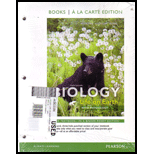
Introduction:
Reproduction is a process through which a new individual is produced. Reproduction can be sexual and asexual. Asexual reproduction is a type of reproduction, which does not involve the fusion of sex cells or gametes, and the offspring produced by a single parent and inherit the genetics of that parent only. Whereas, the sexual reproduction involves the fusion of the two gametes that are derived from male and female individuals.
Answer to Problem 1FIB
Correct answer:
Reproduction by a single animal, without the need for sperm fertilizing an egg, is called asexual reproduction. A (n) bud is a new individual that grows on the body of the adult and eventually breaks off to become independent. During fragmentation, an adult animal splits into two or more pieces, and each piece regenerates a complete organism.
Explanation of Solution
Asexual reproduction is a type of reproduction, which does not involve the fusion of sex cells or gametes, means the organism developed without the need for sperm fertilizing egg. The offspring produced by the asexual mode of reproduction are genetically identical and inherits the genes only from the single parents.
Some cnidarians and sponges such as corals and anemones are reproduced by budding Budding is the process of formation of a new individual from a small bud. Bud grows on the body of the mature adult organism and eventually breaks off to become independent.
Fragmentation is another method for asexual reproduction.in which one piece of the organism’s body part will lead to the production of the entirely new organism. A variety of animals, including some
Asexual reproduction is the mode of reproduction in which the sex cells or gametes, from the male and female, are not involved in the process of reproduction. There are several methods through which an organism reproduced asexually such as budding, fragmentation, binary fission.
Want to see more full solutions like this?
 Human Anatomy & Physiology (11th Edition)BiologyISBN:9780134580999Author:Elaine N. Marieb, Katja N. HoehnPublisher:PEARSON
Human Anatomy & Physiology (11th Edition)BiologyISBN:9780134580999Author:Elaine N. Marieb, Katja N. HoehnPublisher:PEARSON Biology 2eBiologyISBN:9781947172517Author:Matthew Douglas, Jung Choi, Mary Ann ClarkPublisher:OpenStax
Biology 2eBiologyISBN:9781947172517Author:Matthew Douglas, Jung Choi, Mary Ann ClarkPublisher:OpenStax Anatomy & PhysiologyBiologyISBN:9781259398629Author:McKinley, Michael P., O'loughlin, Valerie Dean, Bidle, Theresa StouterPublisher:Mcgraw Hill Education,
Anatomy & PhysiologyBiologyISBN:9781259398629Author:McKinley, Michael P., O'loughlin, Valerie Dean, Bidle, Theresa StouterPublisher:Mcgraw Hill Education, Molecular Biology of the Cell (Sixth Edition)BiologyISBN:9780815344322Author:Bruce Alberts, Alexander D. Johnson, Julian Lewis, David Morgan, Martin Raff, Keith Roberts, Peter WalterPublisher:W. W. Norton & Company
Molecular Biology of the Cell (Sixth Edition)BiologyISBN:9780815344322Author:Bruce Alberts, Alexander D. Johnson, Julian Lewis, David Morgan, Martin Raff, Keith Roberts, Peter WalterPublisher:W. W. Norton & Company Laboratory Manual For Human Anatomy & PhysiologyBiologyISBN:9781260159363Author:Martin, Terry R., Prentice-craver, CynthiaPublisher:McGraw-Hill Publishing Co.
Laboratory Manual For Human Anatomy & PhysiologyBiologyISBN:9781260159363Author:Martin, Terry R., Prentice-craver, CynthiaPublisher:McGraw-Hill Publishing Co. Inquiry Into Life (16th Edition)BiologyISBN:9781260231700Author:Sylvia S. Mader, Michael WindelspechtPublisher:McGraw Hill Education
Inquiry Into Life (16th Edition)BiologyISBN:9781260231700Author:Sylvia S. Mader, Michael WindelspechtPublisher:McGraw Hill Education





